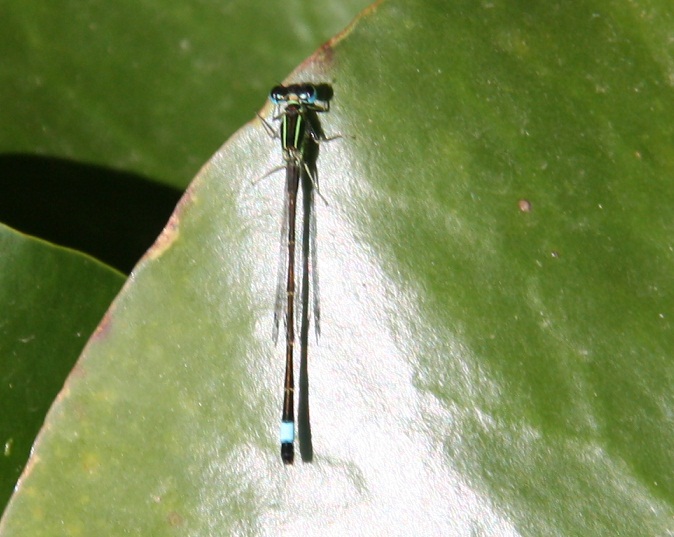Spanische Pechlibelle
© Clemens M. Brandstetter
 (from Boudot & al. 2009:68): It replaces Ischnura elegans in large parts of the Iberian Peninsula. Over parts of its range it is hybridising with I. elegans, resulting in the assimilation and replacement by I. elegans due to unidirectional hybridisation. Geneteic analysis have shown that both taxa are closely related and should be regarded as incipient species. Their divergence, initiated by climate change and geographical isolation, began at about 100.000 years ago at the beginning of the last glacial period.
(from Boudot & al. 2009:68): It replaces Ischnura elegans in large parts of the Iberian Peninsula. Over parts of its range it is hybridising with I. elegans, resulting in the assimilation and replacement by I. elegans due to unidirectional hybridisation. Geneteic analysis have shown that both taxa are closely related and should be regarded as incipient species. Their divergence, initiated by climate change and geographical isolation, began at about 100.000 years ago at the beginning of the last glacial period.
Die Spanische Pechlibelle, Ischnura graellsii (Rambur 1842), ersetzt in Teilen der Iberischen Halbinsel die Grosse Pechlibelle (Ischnura elegans), in manchen Gebieten kommt es zu Überschneidungen und Hybridisierung. Ursprünglich scheint die Art in Nordafrika beheimatet gewesen zu sein. Die Spanische Pechlibelle stellt kaum Ansprüche an die Gewässer, in den ihre Larve lebt.

Männchen der Spanischen Pechlibelle aus Malaga, Meeresniveau (Foto: Juancar Dieguez).
Literatur:
Boudot J.-P., V. J. Kalkman, M. Amorín, T. Bogdanović, A. Rivera,G. Degabriele, J.L. Dommanget, S. Ferreira, B. Garrigós, M. Jović, M. Kotarac, W. Lopau, M. Marinov, N. Mihoković, E. Riservato, B. Samraoui & W. Schneider 2009: Atlas of the Odonata of the Mediterranean and North Africa. – Libellula Supplement 9:1-256.
Monetti, L., Sanchez Guillen R. A. & R. Cordero Rivera 2002: Hybridization between Ischnura graellsii (Vander Linden) and I. elegans (Rambur) (Odonata: Coenagrionidae): are they different species? – Biological Journal of the Linnean Society, 2002, 76, 225–235.
Sánchez-Guillén RA, Wellenreuther M, Cordero A, & Hansson B 2011: Introgression and rapid species turnover in sympatric damselflies. – BMC Evolutionary Biology 11: 210.
